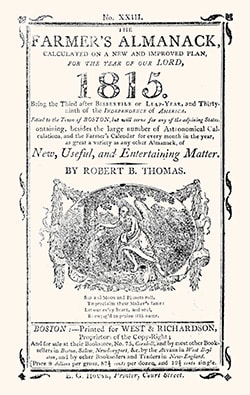The Year We Predicted Snow for July and August
Welcome to the October 2014 edition of “Jud’s New England Journal,” the rather curious monthly musings of Judson Hale, the Editor-in-Chief of Yankee Magazine, published since 1935 in Dublin, NH. The Year We Predicted Snow for July and August And it turned out there was lots of it that summer!Get Our FREE Yankee Food Award […]
 Welcome to the October 2014 edition of “Jud’s New England Journal,” the rather curious monthly musings of Judson Hale, the Editor-in-Chief of Yankee Magazine, published since 1935 in Dublin, NH.
Welcome to the October 2014 edition of “Jud’s New England Journal,” the rather curious monthly musings of Judson Hale, the Editor-in-Chief of Yankee Magazine, published since 1935 in Dublin, NH.
The Year We Predicted Snow for July and August
And it turned out there was lots of it that summer!
Not everyone is aware that the people, including me, who publish YankeeMagazinealso publish the oldest continuously published periodical in America known as The Old Farmers’ Almanac. Our 2015 edition of the Almanac has been out for about a month now and people are, as always, anxious to know the winter weather forecast. Well, I usually say it’ll be “wintry…followed by spring”. That hopefully results in a laugh before I launch into what we really are forecasting which, this year is really wintry. (Let’s just hope it’s followed by spring!)
But the most famous weather forecast the Almanac ever made (or maybe didn’t make) was for the summer of 1816 when we predicted snow for July and August. We still receive questions about it and for the past fifty-six years (I began with Yankee and the Almanac in 1958) I’ve kept my eye out for copies of that 1816 edition. Actually, I’ve found several copies—but none had a snow prediction for that summer. To date all I’ve found is “Now expect good hay weather,” or “Sultry with thundershowers.” It’s so disappointing.
However, I remain hopeful that a few copies still exist that do, indeed, predict “The Cold Summer of 1816,” as that summer is known in history books. There’s no question it did snow in New England and Canada during July and August of 1816. An 1815 eruption of Mount Tambora in what was then the Dutch East Indies had left volcanic dust circling the globe, lowering temperatures as much as several degrees resulting in snow. But did the Almanac predict that?
Some say the printer inserted the snow prediction as a joke while Almanac founder, Robert B. Thomas, was sick in bed with the flu. The way I’ve always understood it, when Thomas discovered the “error” he destroyed all – or maybe most of – the “snow” copies and reprinted the 1816 edition with the more conventional forecast. It’s said the word got out anyway and during the early months of that year, Thomas was repeatedly called upon to deny making such a ridiculous forecast for the following summer. Then, when it really did snow in July, he changed his tune and took full credit. “Told you so!” he allegedly said. If the story is true, it is one of the best examples of a subtle skill my uncle, Robb Sagendorph, our Almanac’s 11th editor (I eventually became the 12th and today, our own Janice Stillman is the 13th), always referred to as “almanacsmanship.”


